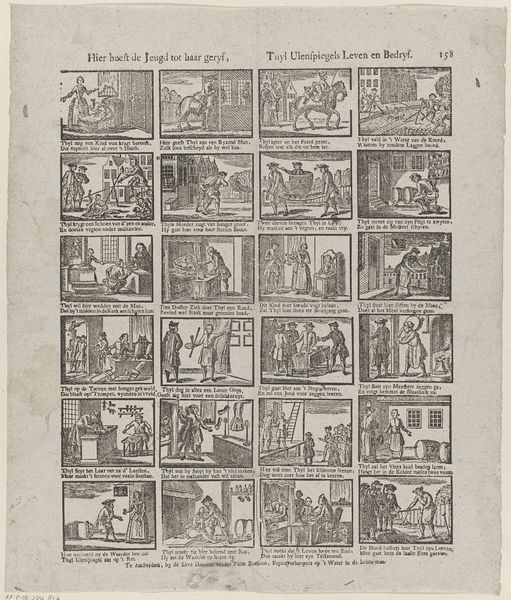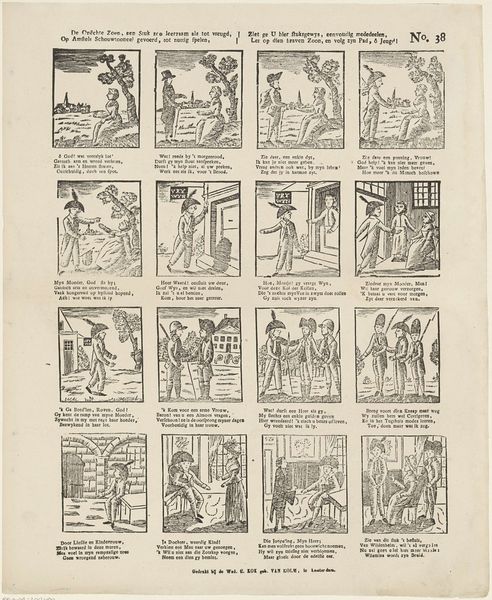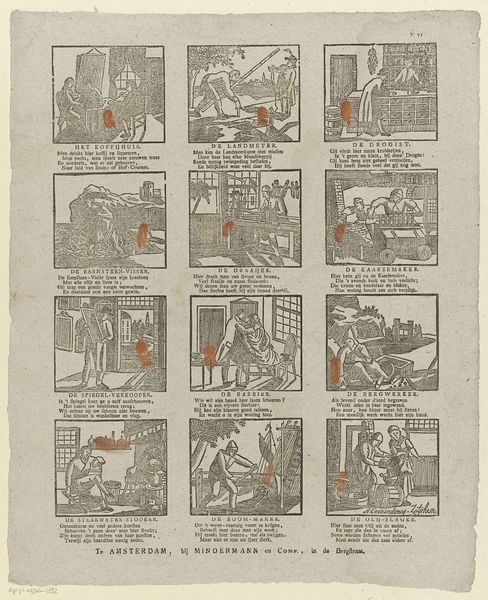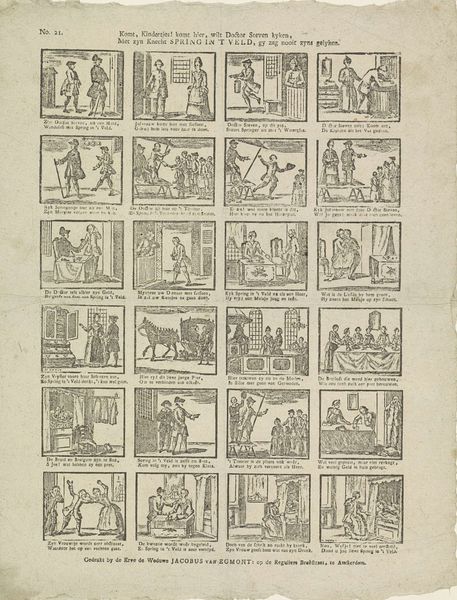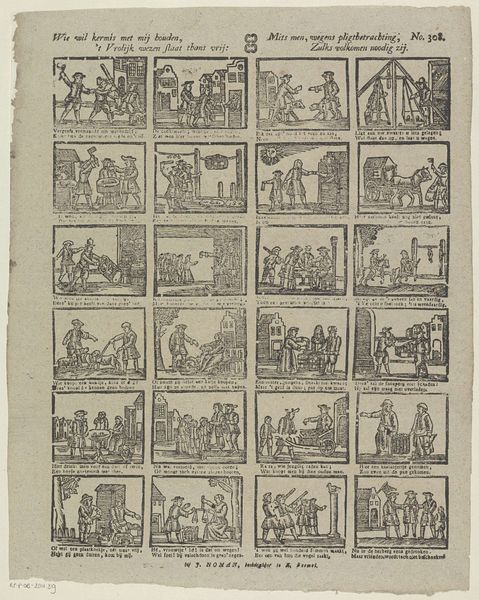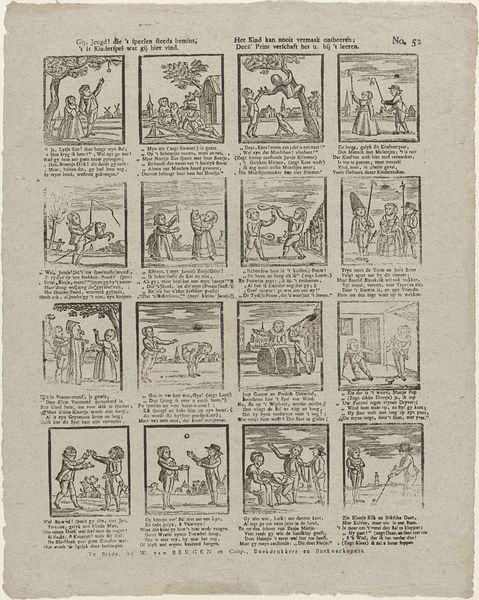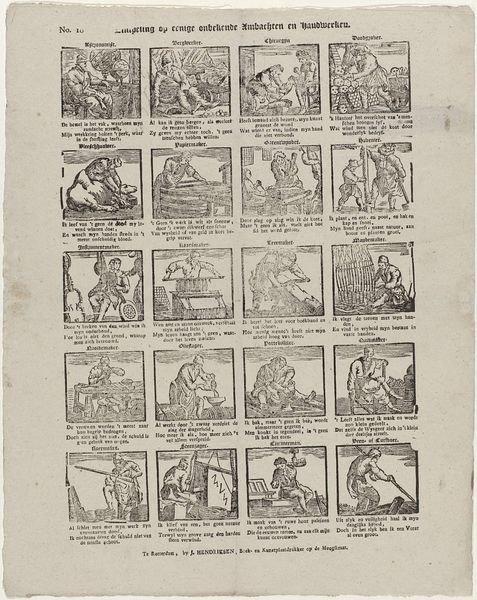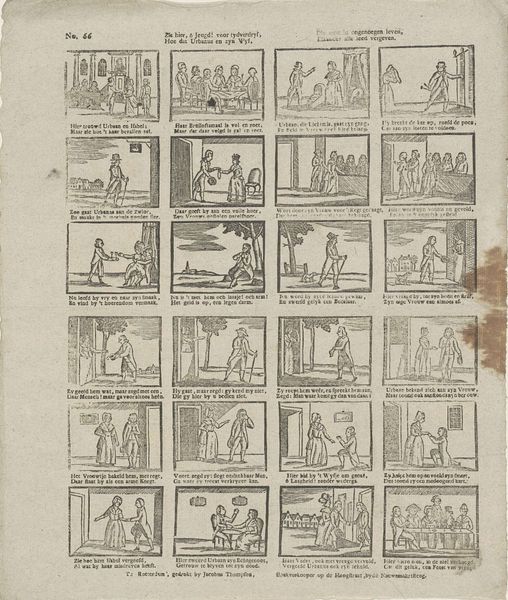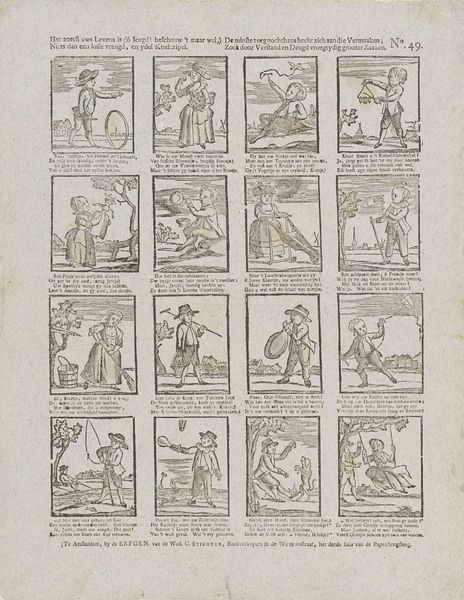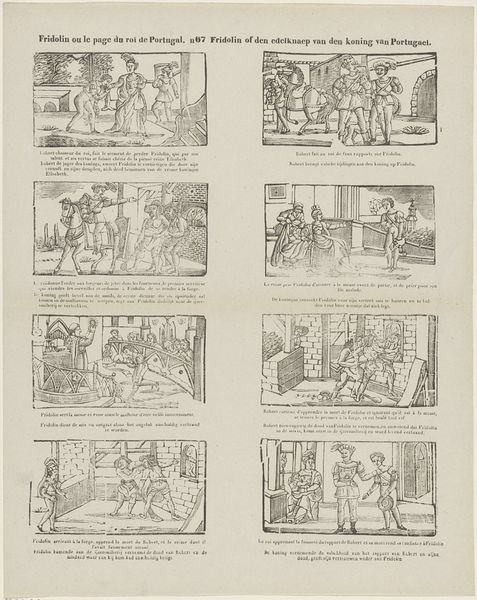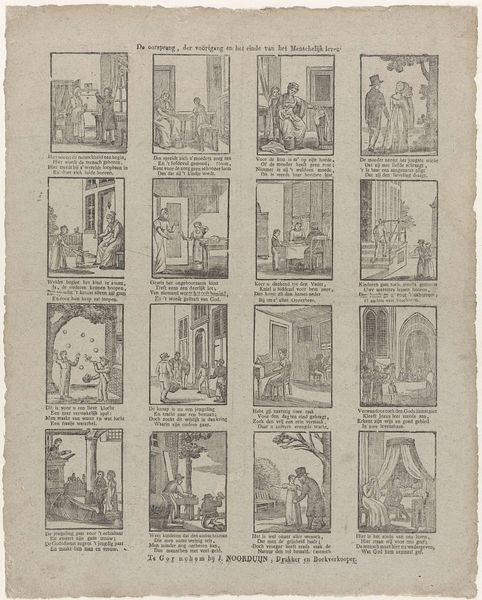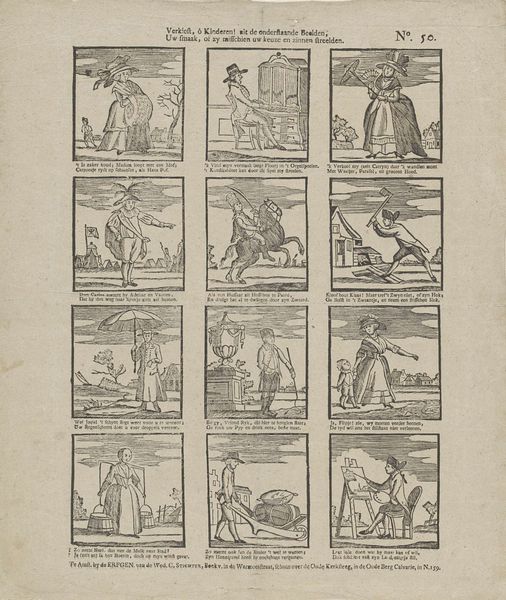
De onëchte zoon, een stuk zo leerzaam als tot vreugd, / Op Amstels schouwtoneel gevoerd, tot nuttig speelen, / Ziet ge uw hier stuksgewys, eenvouwig mededeelen, / Let op dien braaven zoon, en volg zyn pad, ô jeugd! 1831 - 1854
0:00
0:00
ervehrynders
Rijksmuseum
print, engraving
#
narrative-art
#
dutch-golden-age
# print
#
comic
#
genre-painting
#
engraving
Dimensions: height 406 mm, width 333 mm
Copyright: Rijks Museum: Open Domain
Curator: This engraving, made by Erve H. Rynders between 1831 and 1854, is titled "De onechte zoon, een stuk zo leerzaam als tot vreugd," which translates roughly to "The illegitimate son, a piece as instructive as it is joyful." Editor: Instructive, indeed. At first glance, it’s striking how this piece reads almost like a storyboard—the sequential, small vignettes remind me of early comics. The cross-hatching is quite pronounced, creating a stark, almost austere visual field. Curator: Precisely. Let's consider Rynders’ choices here. The use of engraving as a medium indicates a reproductive process—a desire to disseminate this narrative widely, perhaps to reach a moralizing or pedagogical aim. It removes the author's "hand," to produce something meant for the collective. Editor: I agree. The material aspect of cheap, reproducible prints meant its reach would be extensive across society and economic levels, as opposed to unique painting or drawings destined for a single aristocratic collection. It also highlights how narrative moved among classes; theater was itself in the Dutch Republic a communal affair. What I am more interested in are the labor conditions surrounding production for such "popular" content as this: did Rynders operate a large workshop with hired hands? Curator: Those are valuable considerations, focusing on production—the "how" of its making. If we consider this print as "narrative art" employing sequential imagery, this becomes a proto-cinematic storytelling. What do you observe within each tableau? Look at the limited palette and strategic employment of light, and line; the visual rhythm leads one through this morality tale. Editor: The rigidness. One does wonder at how the artist’s identity is essentially a brand name to create, rather than a way to interpret his "genius". Each scene presents a social tableau, constructed using lines of labor and profit. Each vignette reveals the power structures inherent in the theatre’s narrative itself, while also subtly underscoring how material determines the range and reception, which creates collective knowledge. Curator: Very astute. So we begin to comprehend it as something that reflects contemporary notions of familial morality communicated through print’s accessible materiality. Editor: Exactly! Its creation speaks not of individual genius alone but echoes of social mores formed in workshops and spread using capital means, all shaping meaning together.
Comments
No comments
Be the first to comment and join the conversation on the ultimate creative platform.
